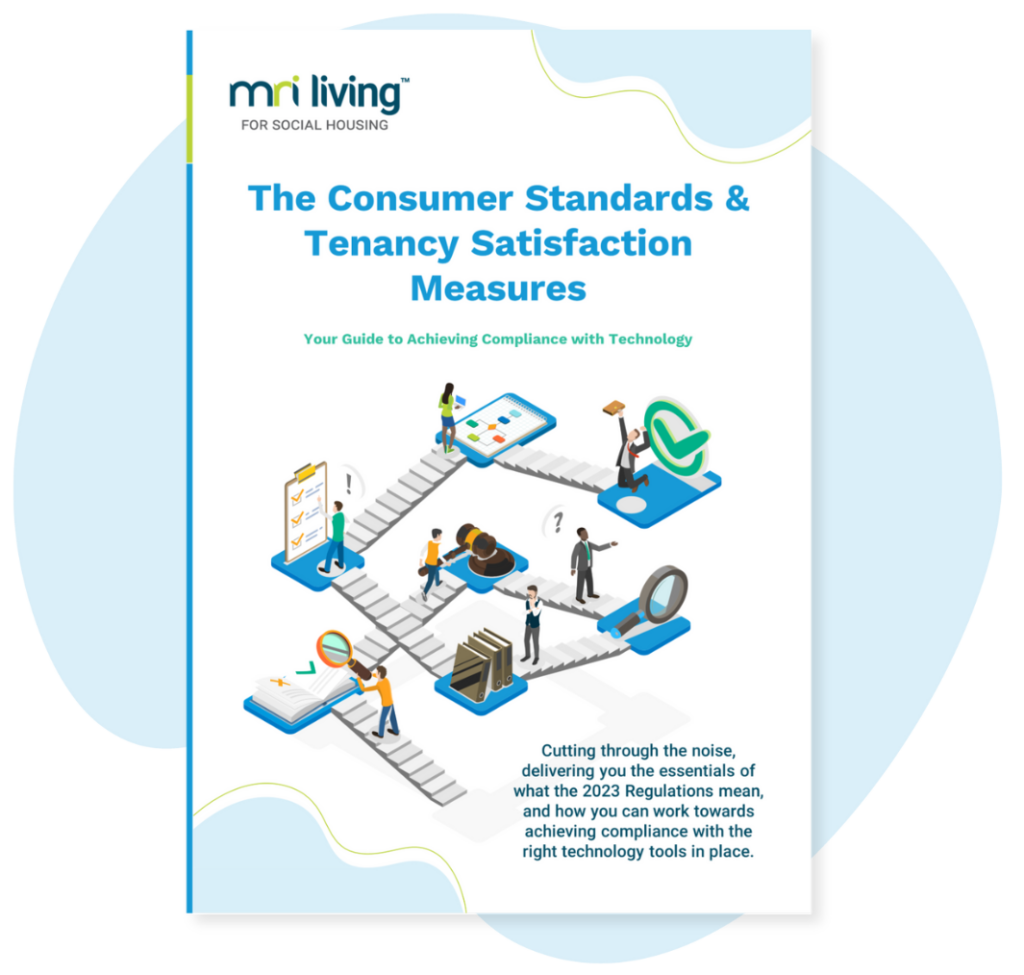Understanding your residents
Developing an understanding of who residents are, what their situation is and how they behave and react to disruption both before a tenancy begins and during one, is key for housing providers to build sustainable tenancies and tailor support.
Social housing providers have become a sector of experts in dealing with a shifting operational environment with limited resources. Challenges faced by housing associations and local authorities over the last few years, such as the roll out of Universal Credit or rent reduction made the impact of 2020 acutely felt by housing providers and residents alike.
In November 2020, Greg Andrews and Joanna Lewis from the MRI Social Housing team presented a webinar exploring ‘Tenancy and Arrears Management’. The session touched upon MRI Housing Analytics software solutions and their ability to offer insights into individual residents’ behaviours as well as any risks they might be vulnerable to, ensuring organisations not only secure tenancies but sustain and support them.
The MRI Housing Analytics suite supports our customers to understand their residents at two key stages of the tenant journey.
- Pre-tenancy: MRI Safestart
- In-tenancy: MRI Tenancy Analytics & Income Analytics
Pre-tenancy and in-tenancy analytics can help to build a rounded understanding of a resident and the pressure points they might face. Experian, one of the external data sources used in the MRI Tenancy Analytics tool, estimate that 50% of adults in the UK are potentially financially vulnerable, with 3 million people unable to pay debts when they are due.
Building the Bigger Picture
For social landlords, one of the biggest risks for rental arrears recognised by Income Manager, Alison Myhill at North Devon Homes is “at the start of the tenancy.” Robust analytics can provide income teams with real-time data to assist informed decisions and establish sustainable tenancies.
Before a social housing tenancy begins, pre-tenancy assessments can provide significant benefits in building a picture of who a resident is and what services they may need to access across their time in a home. In our Senior Solutions Architect, Greg Andrews’ experience, “We hear from lots of our customers that engagement with residents happens at a much higher rate when the right support is offered before they move into a property.”
For organisations, pre-tenancy analytics solutions should be used as a springboard for human investigation; an opportunity to co-create with the resident a structure that can enable them to have a long, thriving tenancy with open, honest communications. If those channels are opened before a missed rent payment, timely customer engagement can also help to improve the mental health of residents by alleviating some of the stress caused by debt.
As part of our application process we carry out a Safestart affordability assessment which looks both at the customer’s incoming and outgoing monies as well as any current debt or liabilities they may have. This enables us to have frank and honest conversations with our customers on how they might afford the rent and costs of living in their new home and support them best by signposting them to additional support when needed.
Holly Edwards, Head of Lettings, Stonewater
During a tenancy, a resident may fall into rent arrears seemingly suddenly and without communication with their housing provider as to the context. For some housing providers, a missed rent payment may be the first signal of someone in financial distress. Using data analytics, which harness externally available data sources, organisations can track the financial performance of an individual. These tools can flag the first signals of hardship months in advance and thereby mitigate the possibility of rent arrears, while highlighting those most at risk due to circumstances such as welfare issues, vulnerabilities and fuel poverty.
When external data points are accompanied with internal information gathered by the housing provider, officers can approach communications with a broad understanding of a resident and their needs. Additional context, such as whether a resident has accessed a food bank, what their employment status is or if an individual requires support around literacy will influence the approach that officers take with interactions and the mediums they choose.
Listening to Resident Preferences
Feedback from MRI Social Housing customers using the Income Analytics tools have shown that residents generally prefer SMS communications and are more likely to respond to calls for action when they are received via that channel. Pertinent questions are – knowing this – where else can SMS be applied? – and how can housing providers rightly serve or train those who are not comfortable with that method of communication?
Using every touchpoint to listen to residents can transform the relationship that a resident has with their housing provider. Utilising the MRI repairs and maintenance tools, organisations can compile information around the best time of day to reach residents in order to ease everyday interactions, for example if a resident works unsociable shift patterns or are more available once children have been dropped at school.
As digital self-service becomes more prevalent across most consumer and public services, having a grip on the type of platforms residents are comfortable with will be paramount to conducting fruitful two-way communications.
The past year in particular, has seen many people’s earnings and security come under threat. Grampian Housing Association in Scotland found that 30% of residents asked were slightly worse off than before 2020 and just over 20% were significantly worse off. Understandably, the self-employed in particular, were the people most at risk of financial hardship during this period. In addition to these findings, 15% of residents asked, who were previously self-sufficient had now applied for welfare and benefits.
To provide a quality response, effective landlord services must be holistic in approach, with fit-for-purpose integral data and systems that are integrated with professional skills and expertise.
Looking to the future: Predictive analytics
For the housing sector, the ability to assess financial stress across the whole resident journey is essential. Philosopher Marshall McLuhan said, “We march backwards into the future”; the ability to look back at financial behaviour across years of data collection can indicate patterns and moments where arrears are likely to increase because of other financial commitments.
Christmas is a good example of this; most people’s spending stretches to account for presents, luxury food and rising heating bills, leaving other outgoings to fall short. Data across multi-year stretches showing proof of financial difficulty during those winter months can help officers instigate conversations in autumn and plan solutions alongside their at-risk residents. When analytics and customer modelling are utilised in a customer-centric manner they can be tools to prevent hardship.
Speaking Directly to the Resident
Last November, the publication of the Charter for Social Housing Residents from central government made clear that the voice of the resident is predicted to become statutory practice in order to influence operations directly.
For housing providers, undertaking in-depth analysis and investigations beyond fulfilling basic customer satisfaction measures will take extra working bandwidth and levels of empathy and insight that technology is yet to offer.
The ramifications for not paying close attention to the lives of residents are serious from a human, as well as a cost savings perspective. Alongside analysing, identifying and predicting behaviours that kickstart actions to prevent hardship, housing solution analytics tools have the ability to further enrich the picture an organisation has of each resident. In turn this will enable housing providers to approach individuals for feedback using their preferred channels and talking about the topics that impact them.
The Consumer Standards and Tenancy Satisfaction Measures: Your Guide to Achieving Compliance with Technology
Cutting through the noise, delivering you the essentials of what the Consumer Standards and Tenancy Satisfaction Measures 2023 Regulations mean, and how you can work towards achieving compliance with the right technology tools in place. New regulatio…

